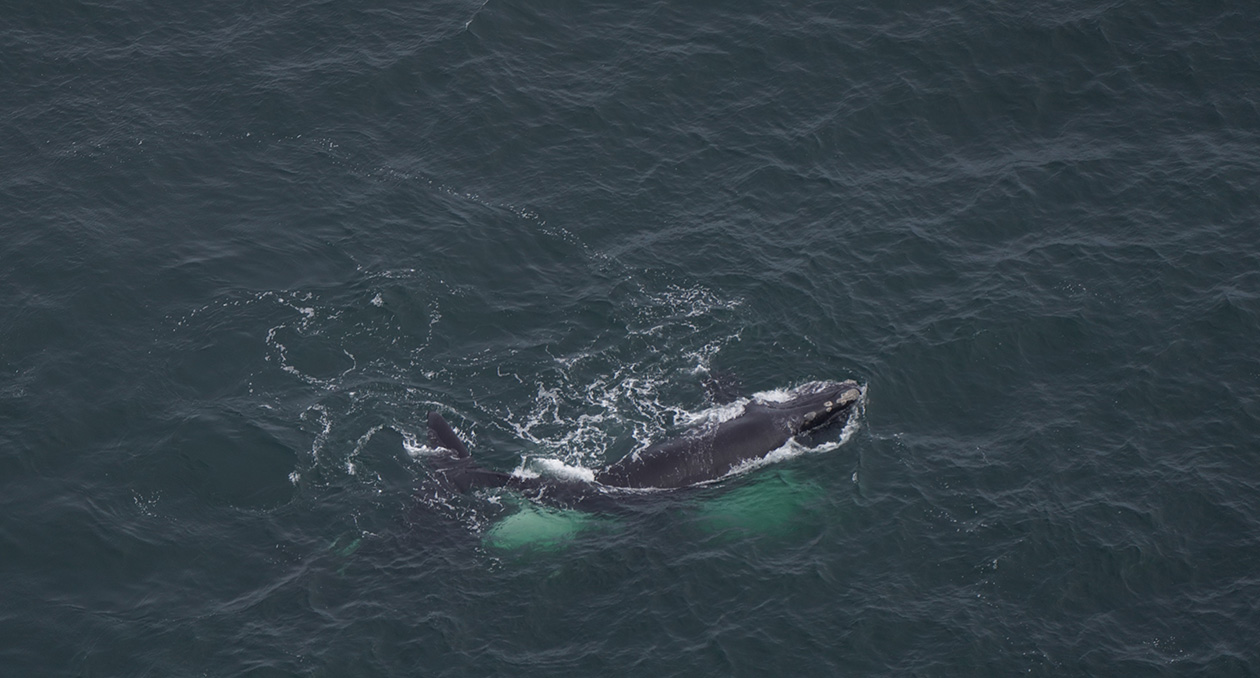
BOSTON, MASS. (March 12, 2024) – Curators of a photo database used to track sightings of North Atlantic right whales are marking a milestone after cataloguing their 800th whale.
The North Atlantic Right Whale Catalog, part of a formal collaboration among researchers that began in 1986, contains all photographed sightings of critically endangered right whales from the North Atlantic and is managed by staff at the Anderson Cabot Center for Ocean Life at the New England Aquarium. The Catalog is the result of over two million photographs from more than 650 contributors from 1935 to the present, ranging from scientists to government researchers, fishermen, and recreational boaters. Last month, the Catalog team added the 800th whale into the database, an unnamed 3-year-old female whale known as Catalog #5193.
“With such a small population of only around 360 living individuals, every whale counts and each one added to the Catalog brings some hope. It is particularly exciting that the 800th whale was born to an enigmatic mother who is rarely seen. What will this young whale’s life look like?” said Philip Hamilton, a senior scientist in the Aquarium’s Anderson Cabot Center who oversees the Catalog.
Catalog #5193 was born in 2021, the first known calf of Catalog #3593. Researchers sighted her with her mother just once, off the coast of North Carolina late in the 2021 calving season—well north of the primary calving area off Florida and Georgia. Their family origins are a bit of a mystery, as neither have been genetically sampled.
“This whale was only seen with her mom once as a very young calf, and given her mom’s sporadic sighting history, we weren’t sure if we’d see it again or be able to confidently match a future sighting to it. But thanks to some luck, and skilled survey teams, we were able to catalog the whale with only three sightings, instead of the usual 15 or more,” said Amy Warren, an assistant research scientist at the Aquarium.
Most right whales are added to the Catalog when they reach age 2 or 3. It takes a few years for a young right whale’s unique natural markings (callosity patterns) to stabilize. Researchers are conservative in the decision to catalog a whale, only doing so when they can be confident that it does not match any other cataloged whale and that future sightings of the individual can be re-identified with confidence. In some cases, it takes many years to collect enough photographic evidence to gain that confidence.
By collecting photos, Aquarium scientists identify whales and use specific numbers—and names for many—to track their life stories through the Catalog including births, injuries, migration patterns, and age to create detailed histories of each individual whale. Of the 800 whales catalogued over the years, 360 have been seen in the last three years—and are therefore presumed alive. Besides known calves that have yet to be cataloged, there are likely very few right whales in the Atlantic that have not been cataloged. There have only been two whales in the past 20 years that were first seen as adults—thus remaining unphotographed for at least 10 years.
The North Atlantic Right Whale Catalog is available to the public. Visitors to the website can look up specific whales by details including number, name, sex, physical markings, and last sightings.
“This is an essential tool in our marine conservation work at the Aquarium. We can piece together these whales’ life stories and determine better ways to protect them,” Hamilton said.
Recently, Aquarium researchers used images from the Catalog to identify two deceased right whales. A juvenile right whale whose carcass was recovered off the coast of Georgia last month, after suffering blunt force trauma from a vessel strike, was identified as a female yearling. Scientists also used photographic data to match a right whale found dead off Martha’s Vineyard entangled in fishing gear as Catalog #5120, a 3-year-old female.
North Atlantic right whales face increasing threats from fishing gear entanglements and vessel strikes, which research has shown affect survival and are impacting females’ ability to produce calves. Fewer than 360 North Atlantic right whales remain in the population, including an estimated 70 breeding females.
MEDIA CONTACT: Pam Bechtold Snyder, psnyder@neaq.org; 617-686-5068
